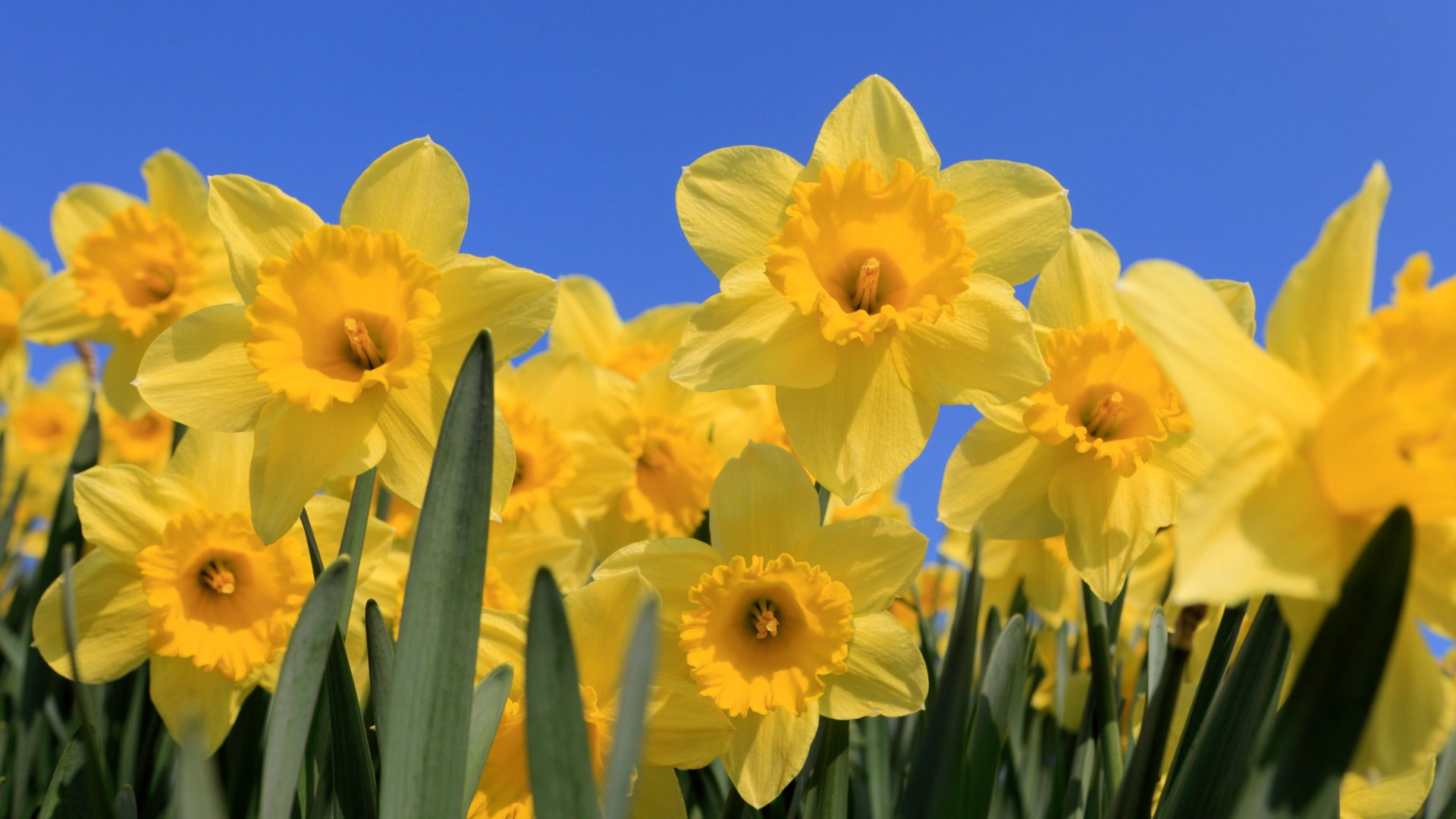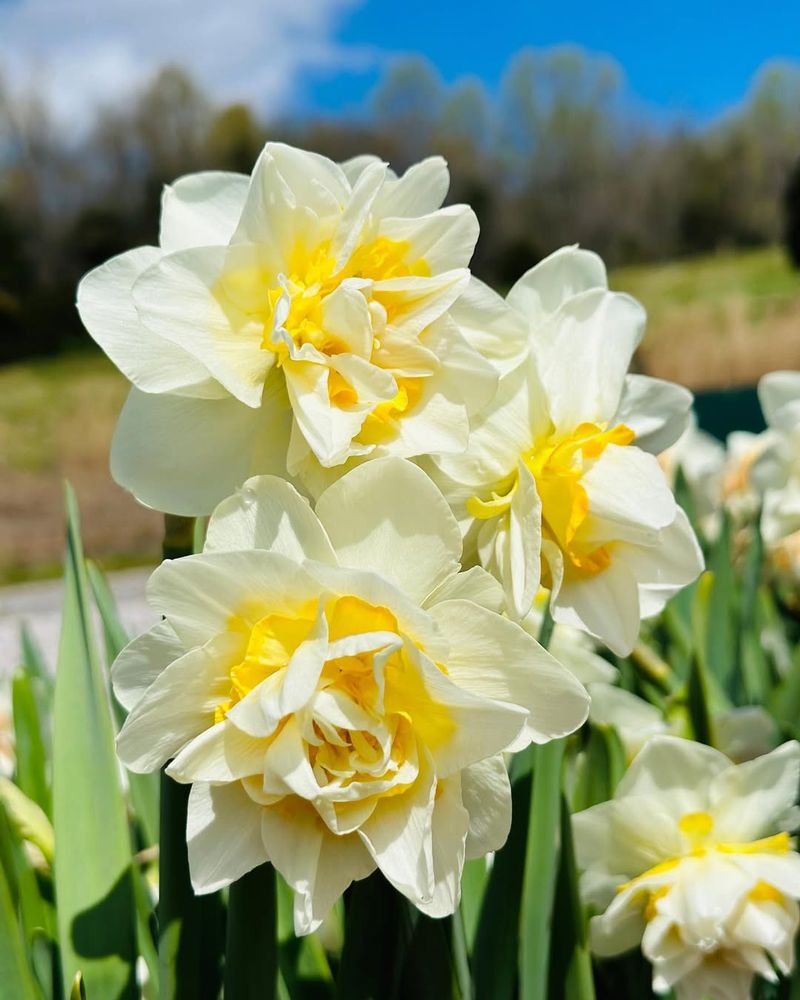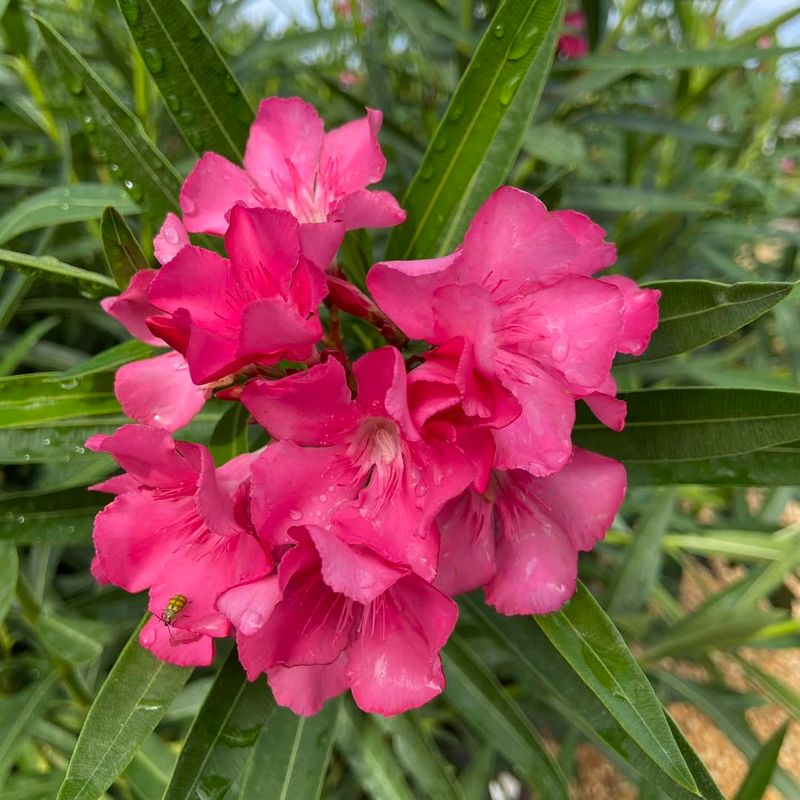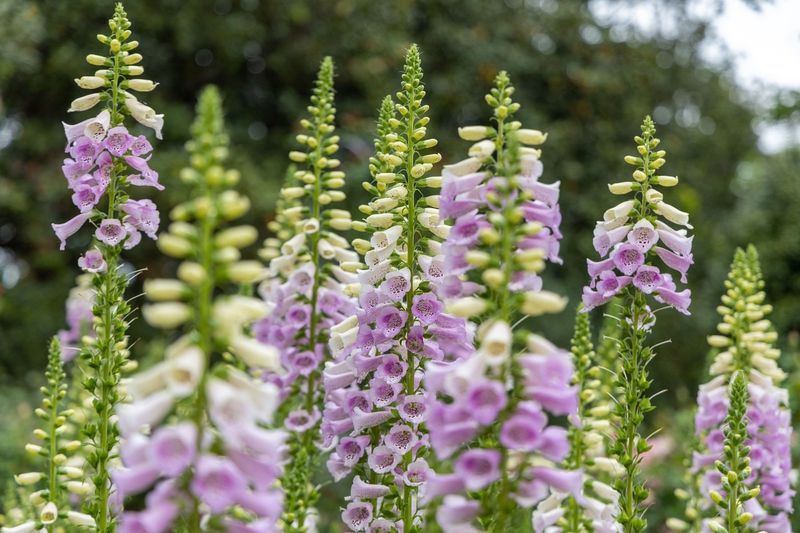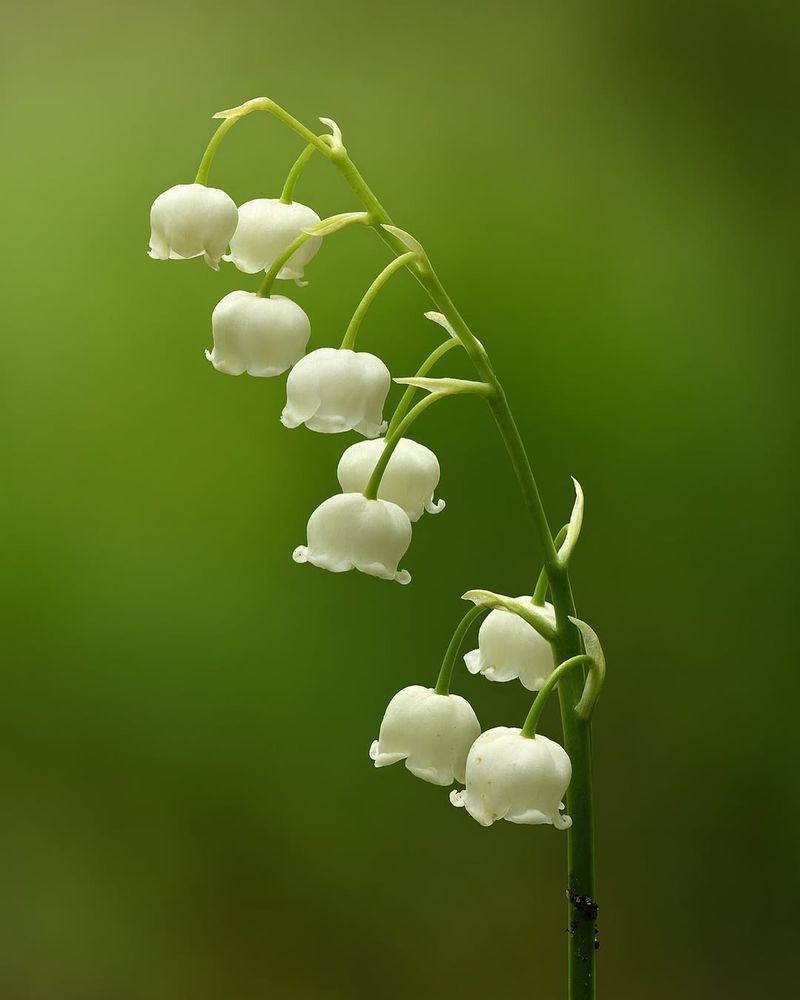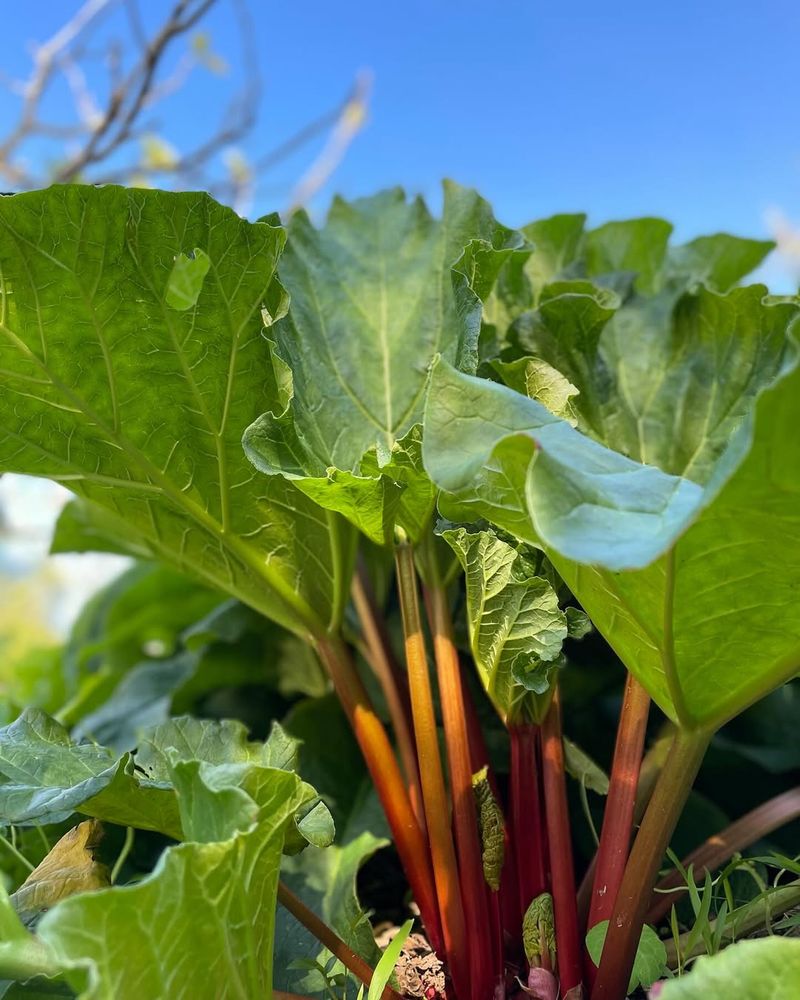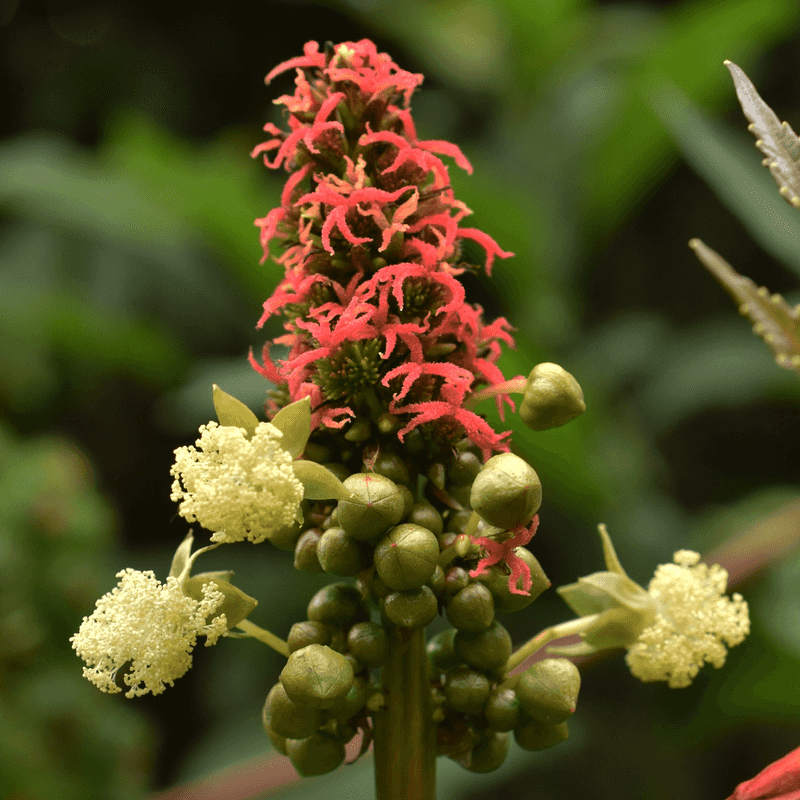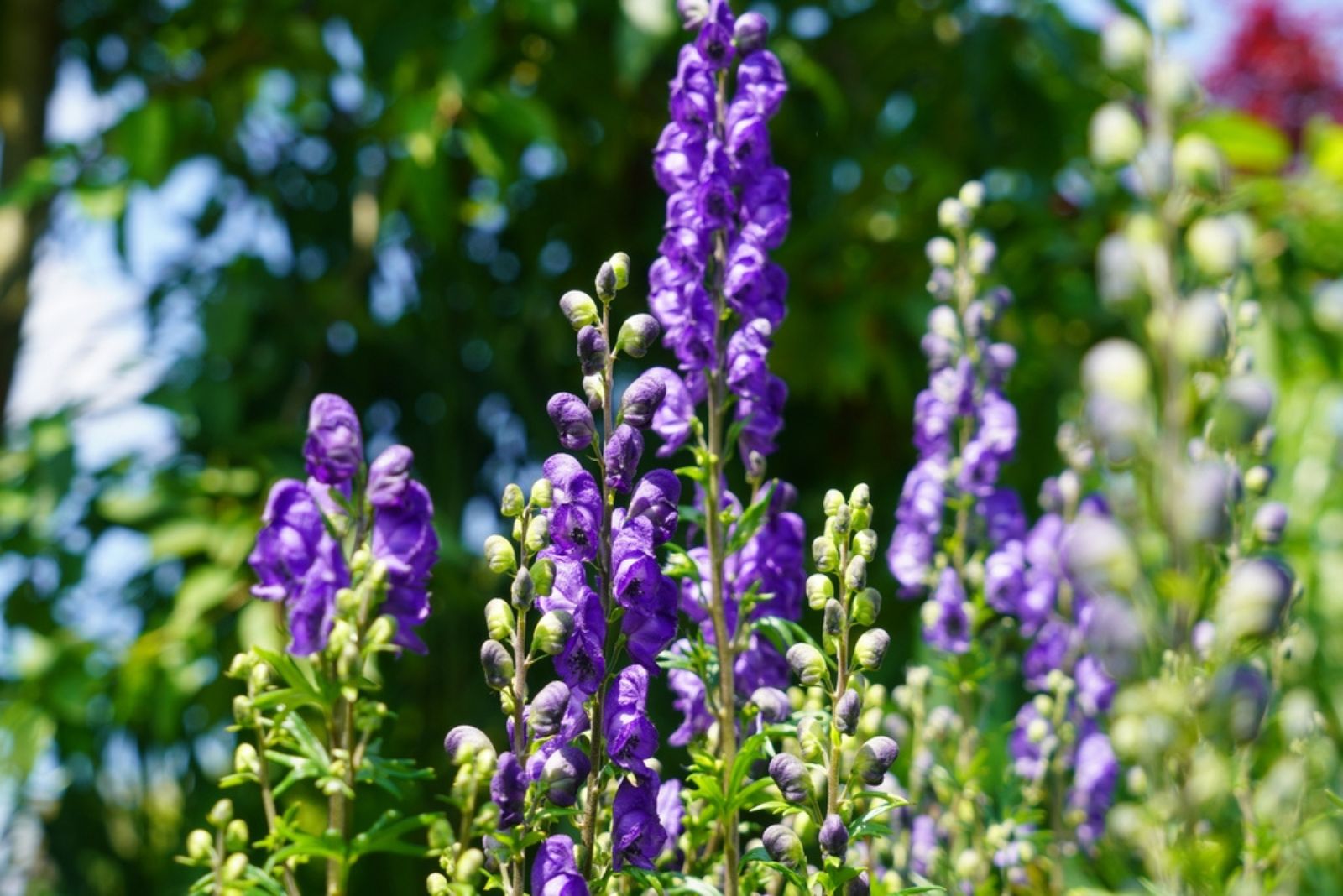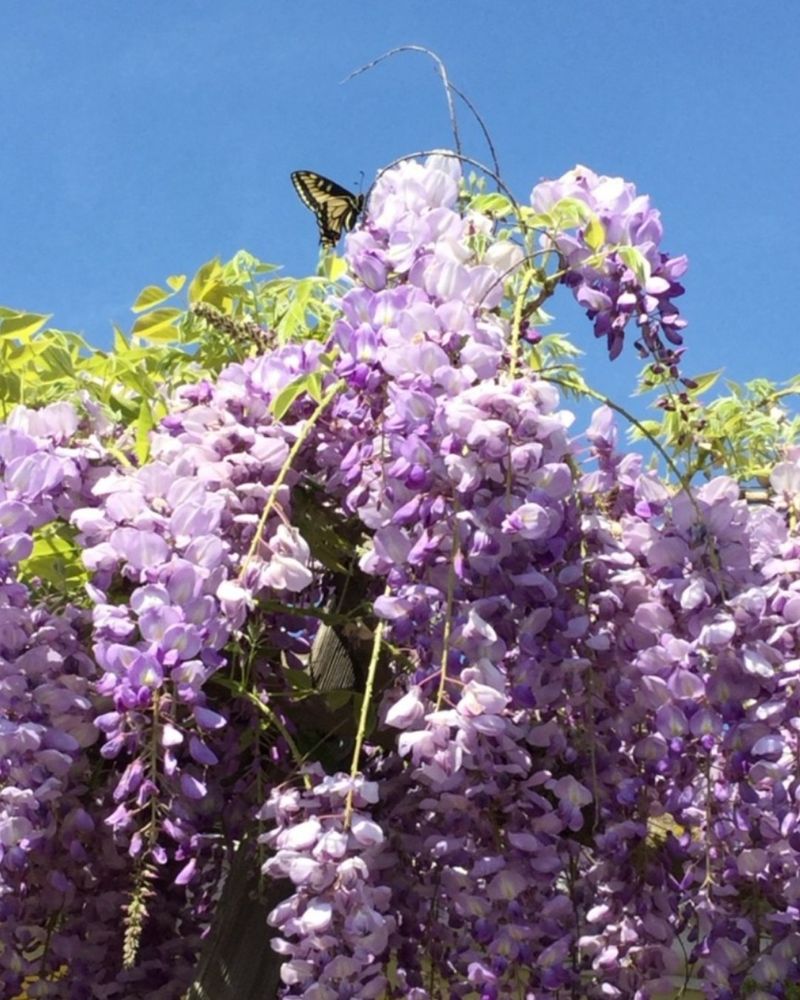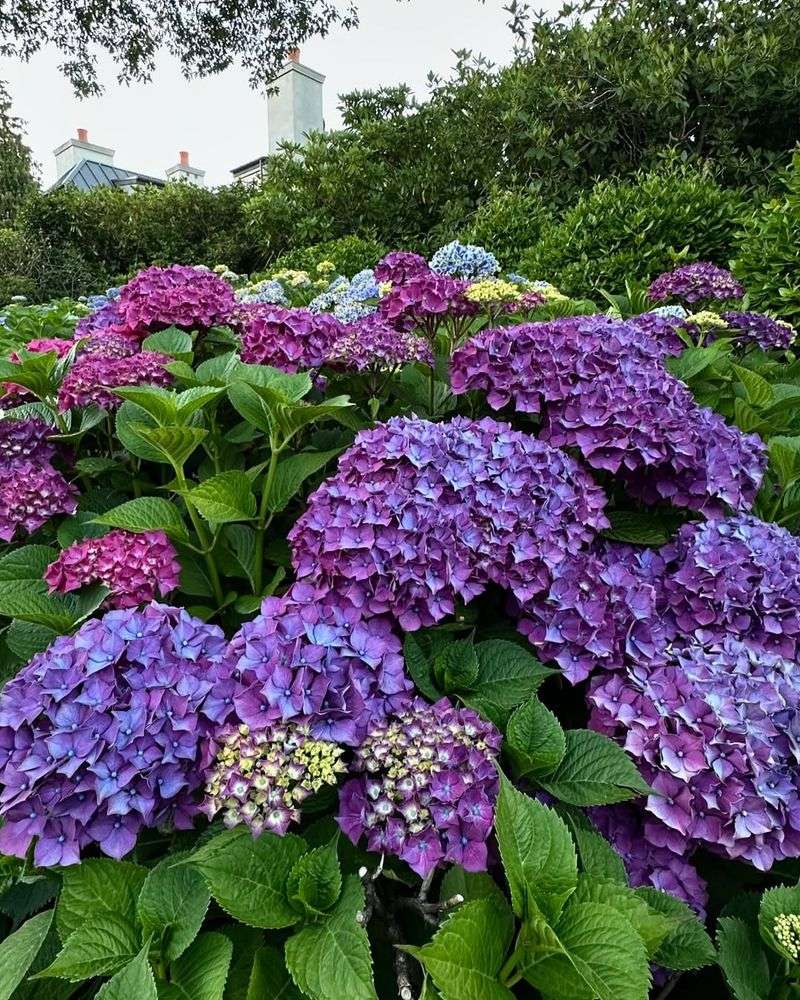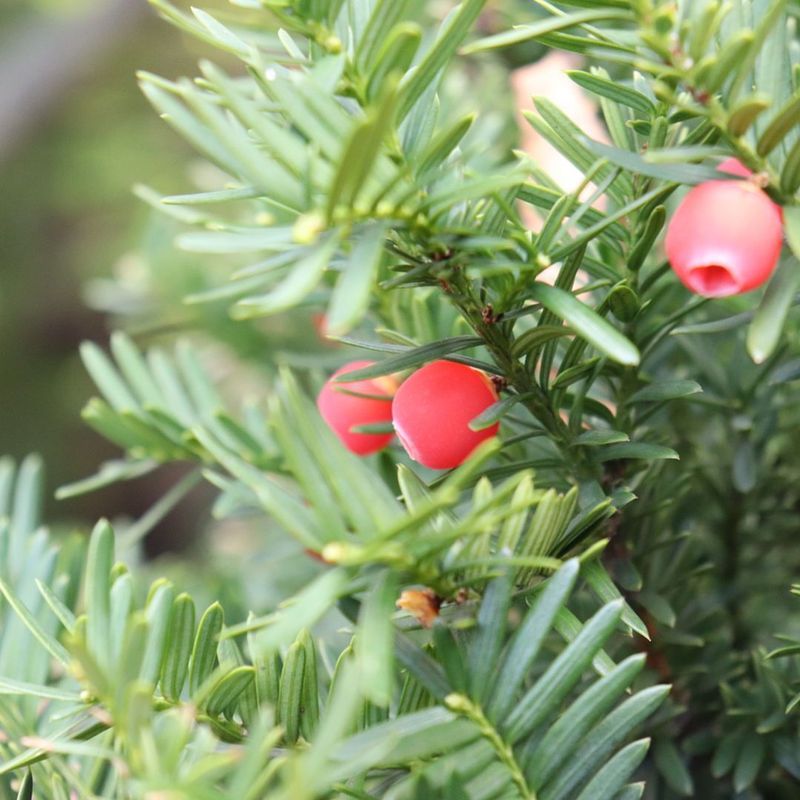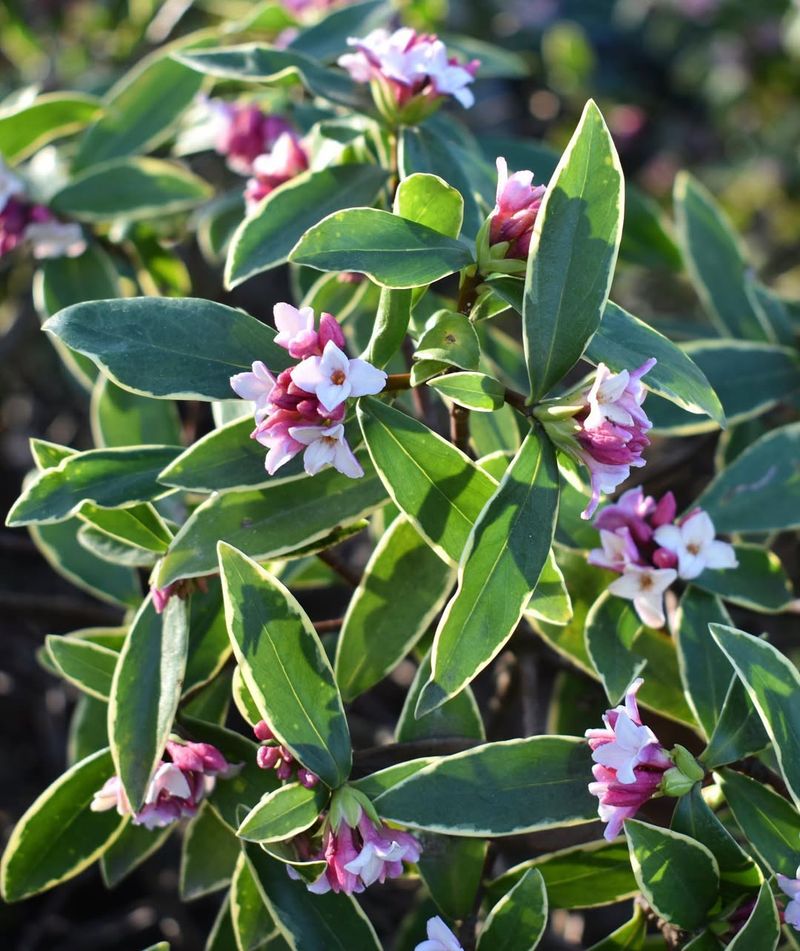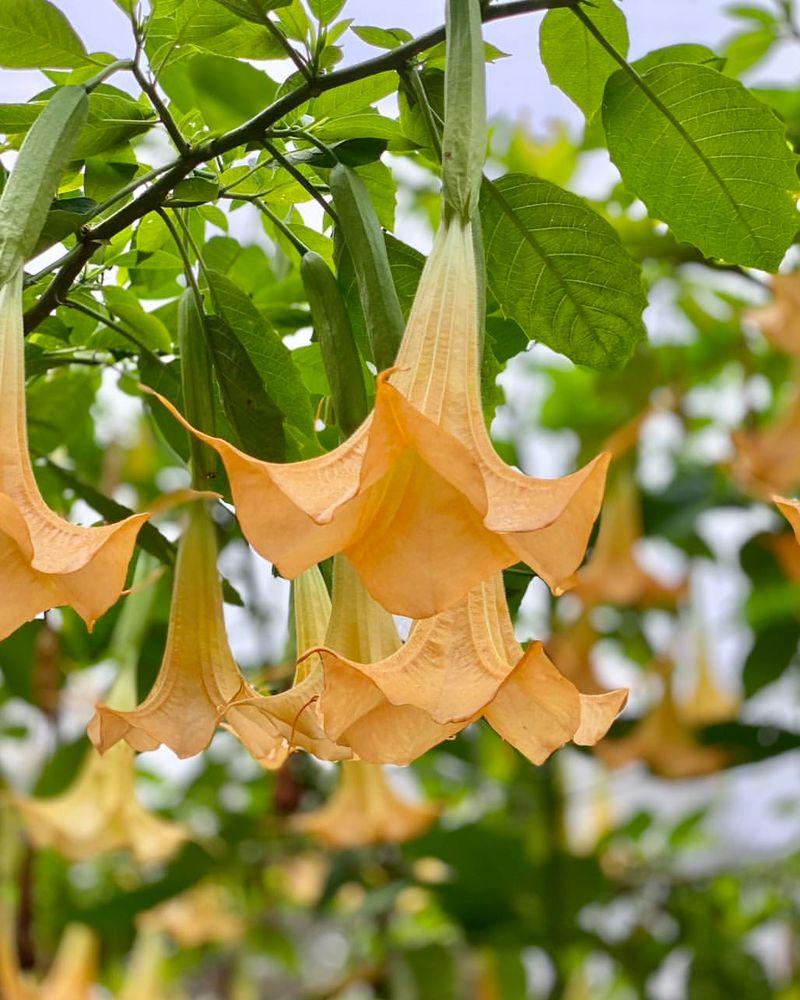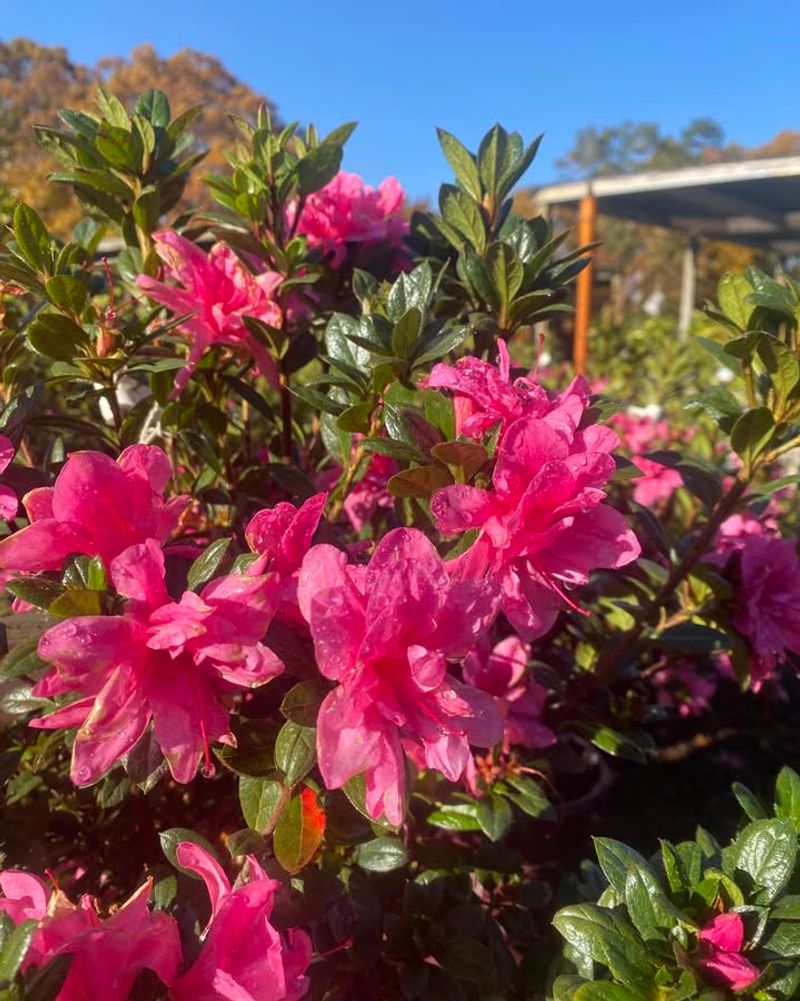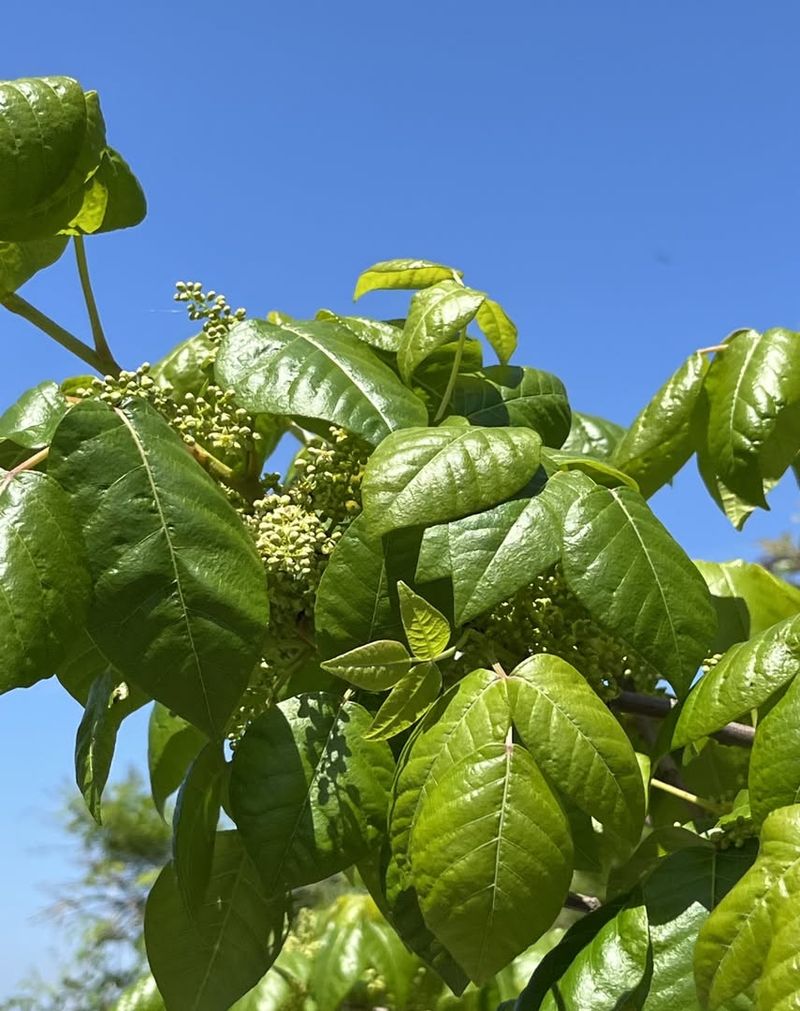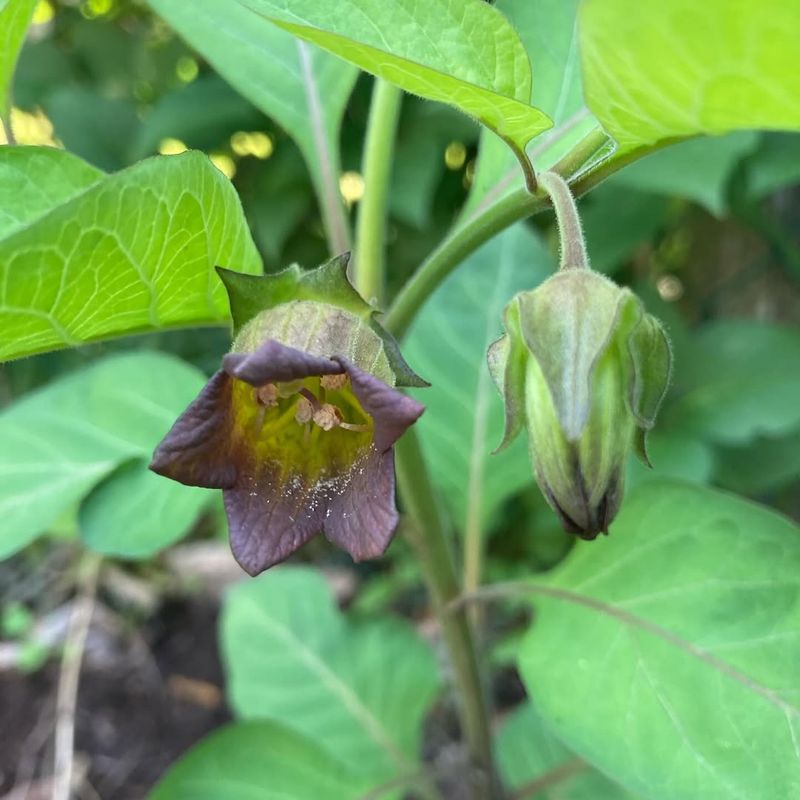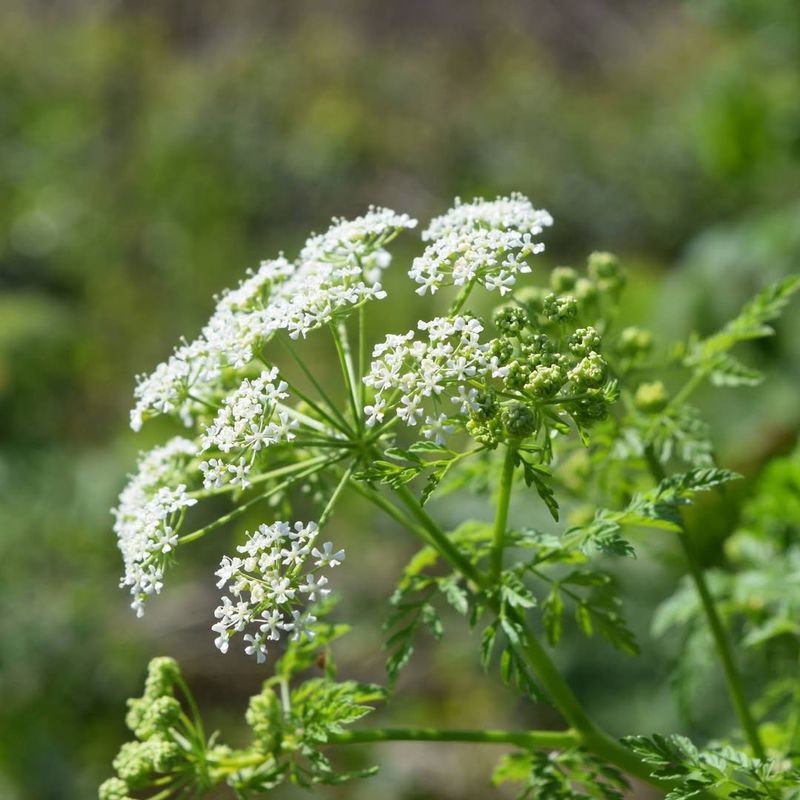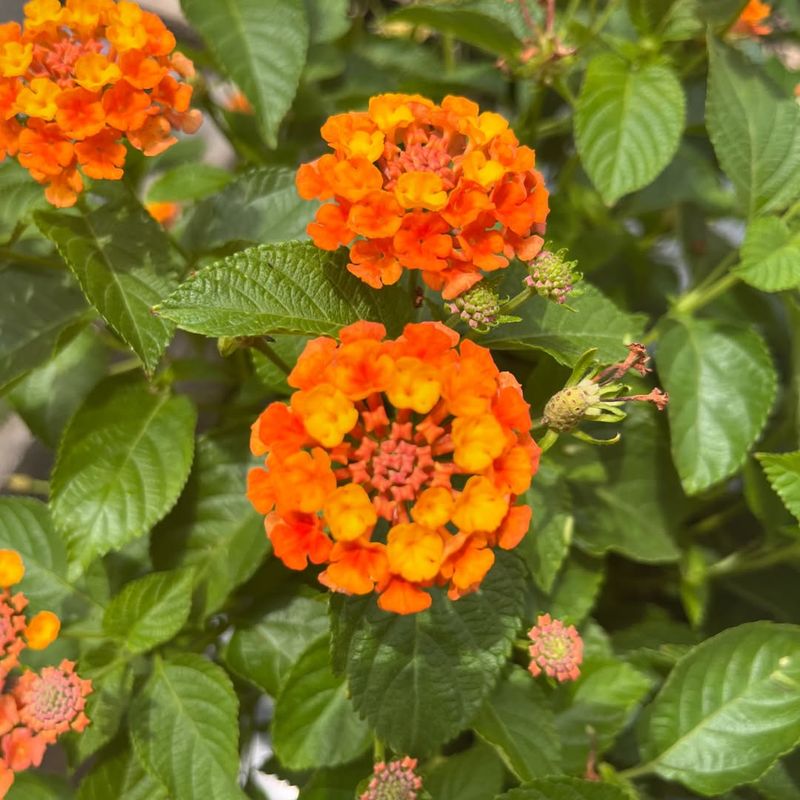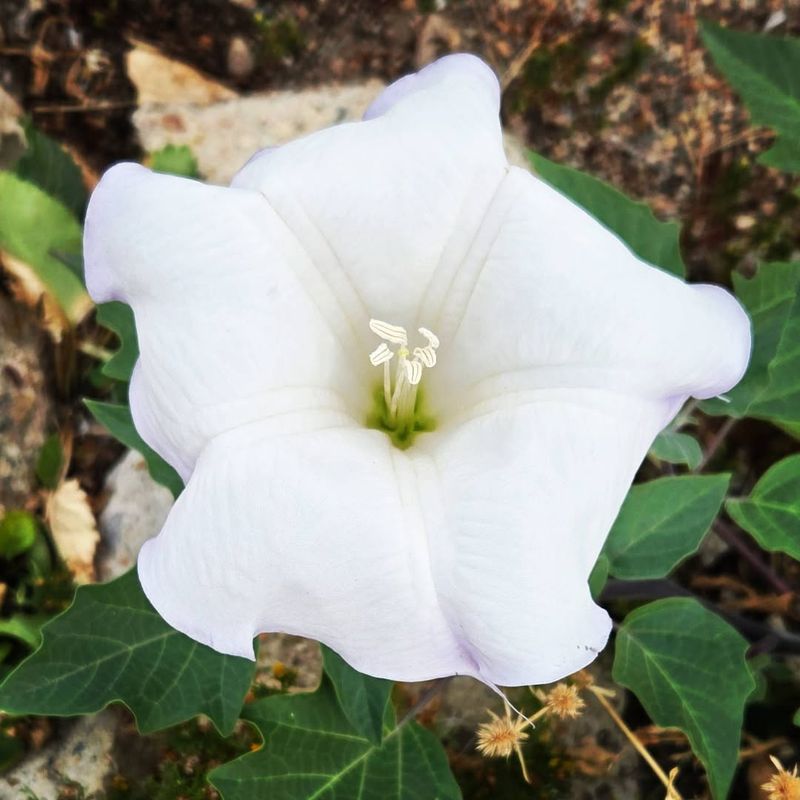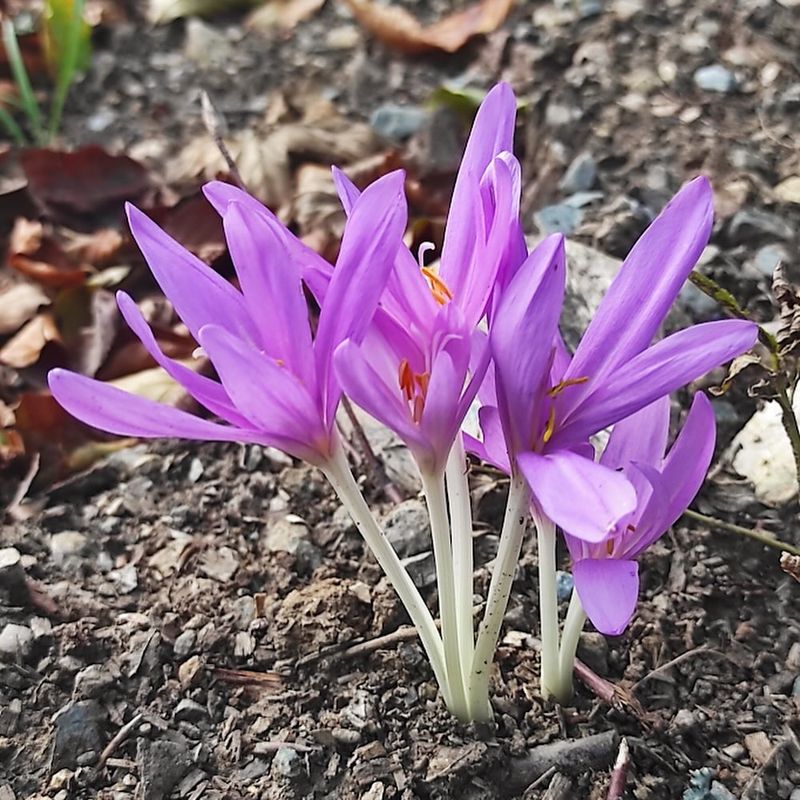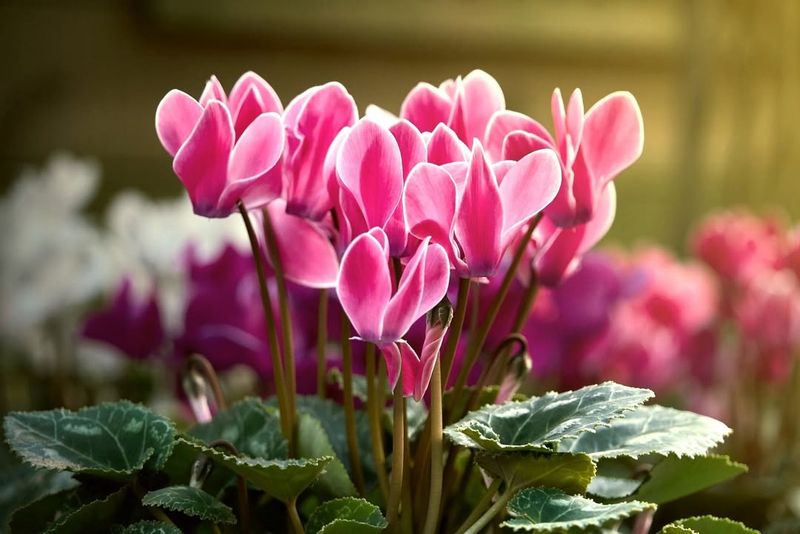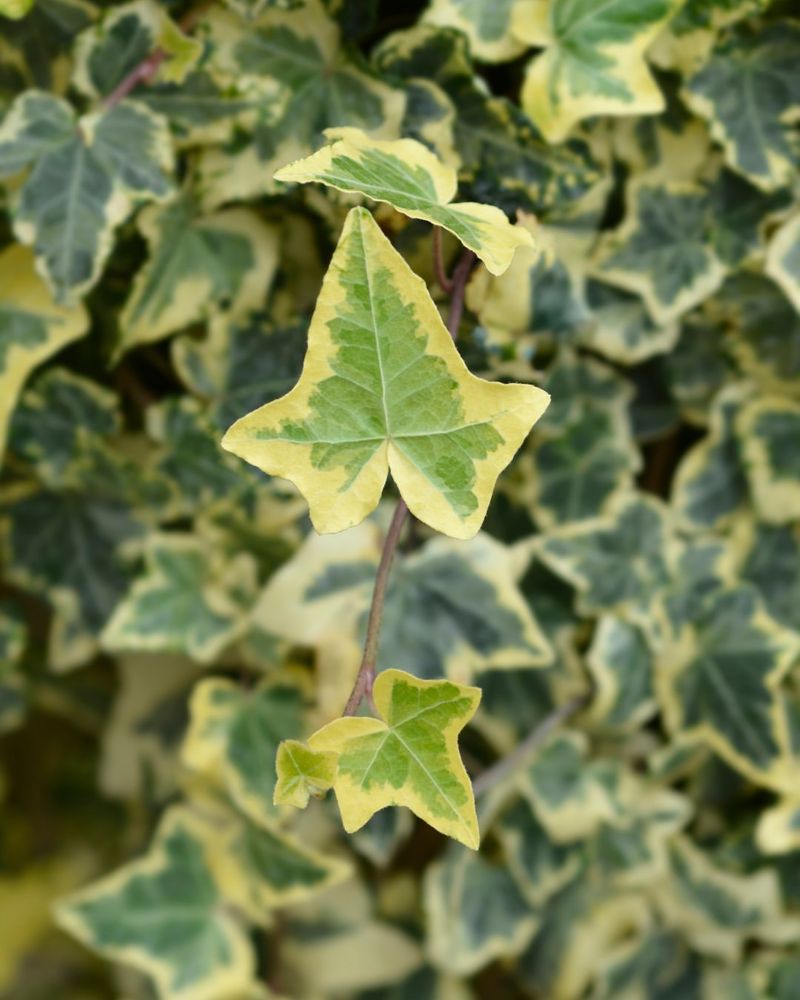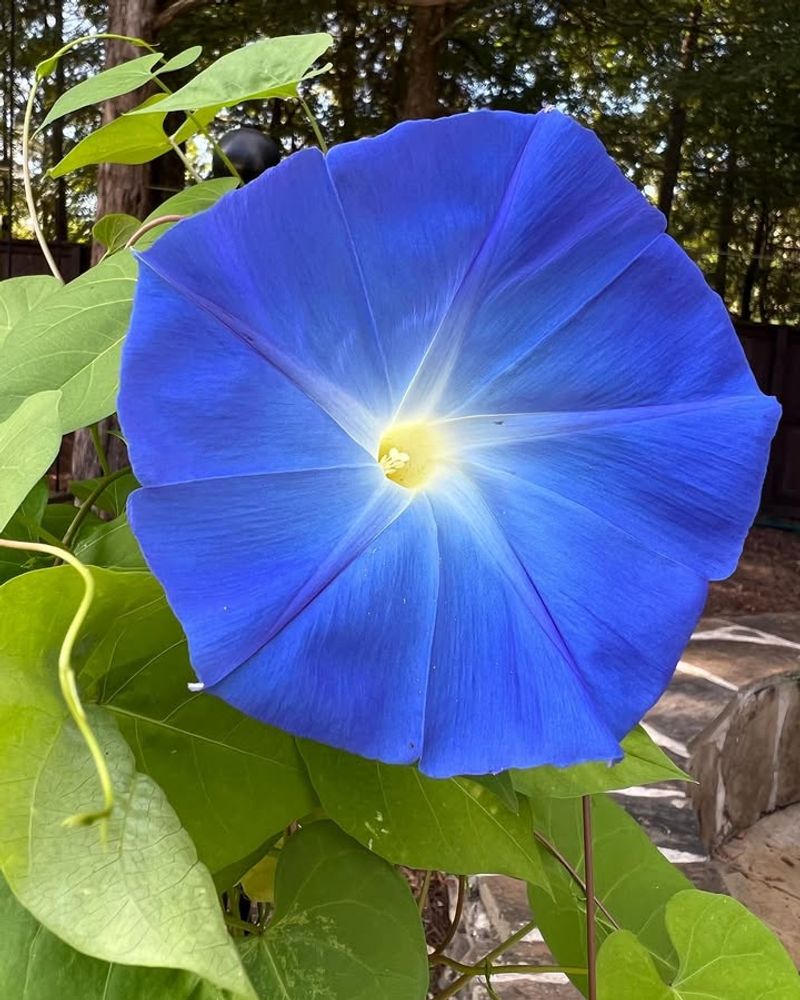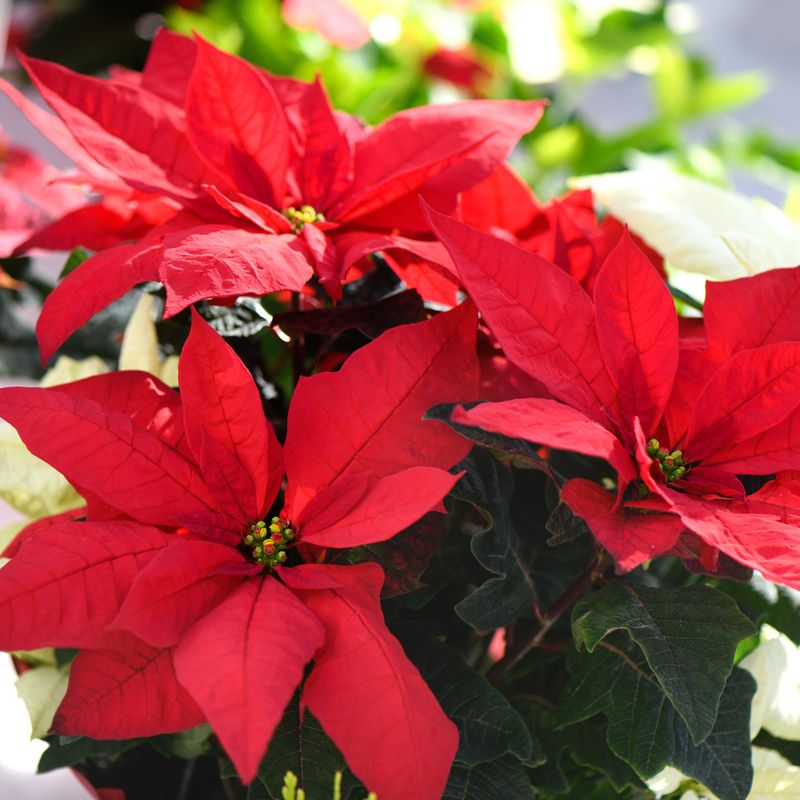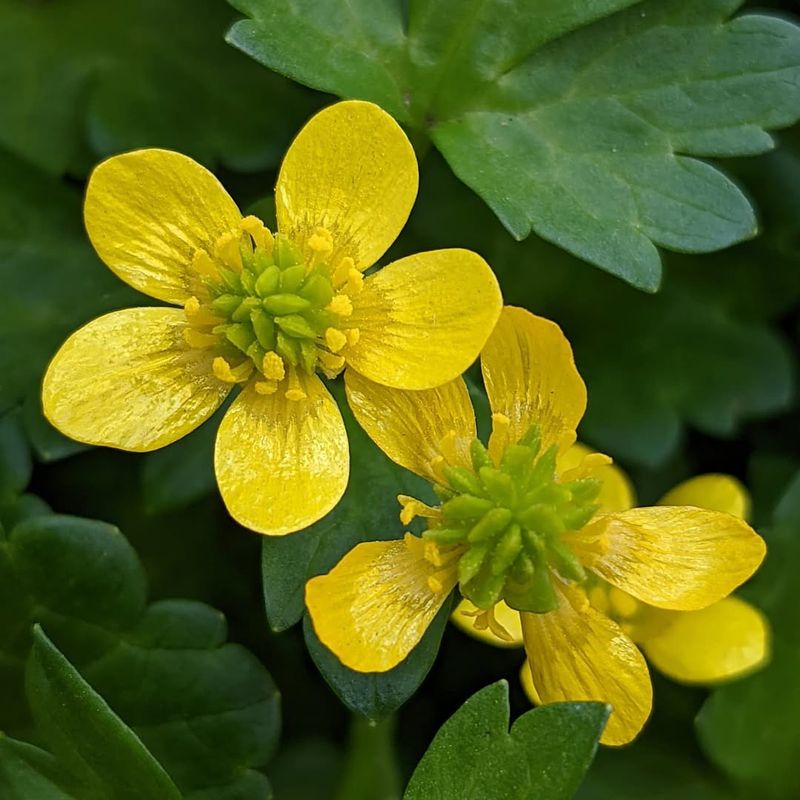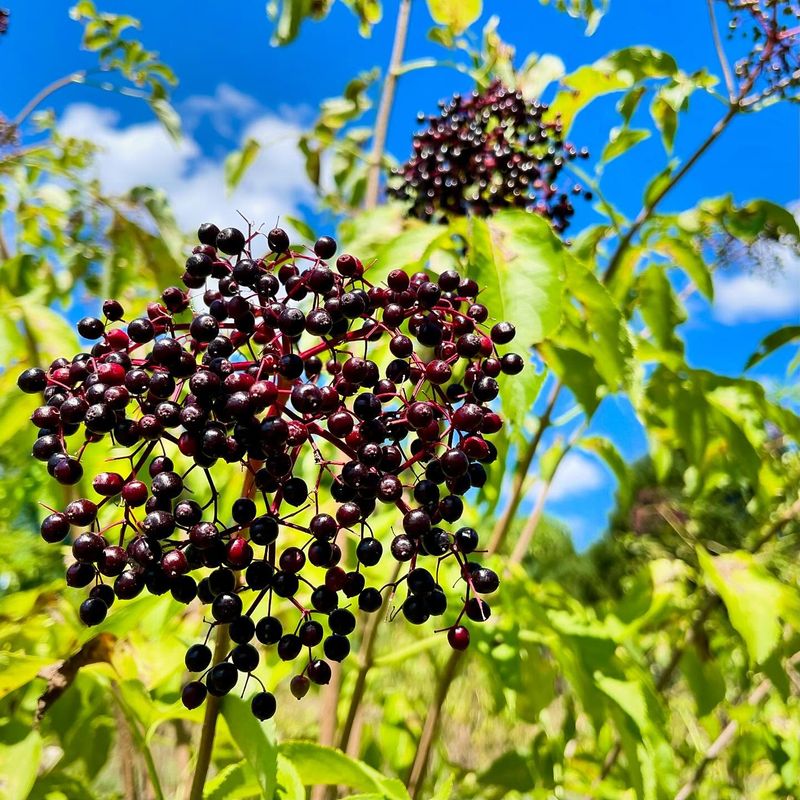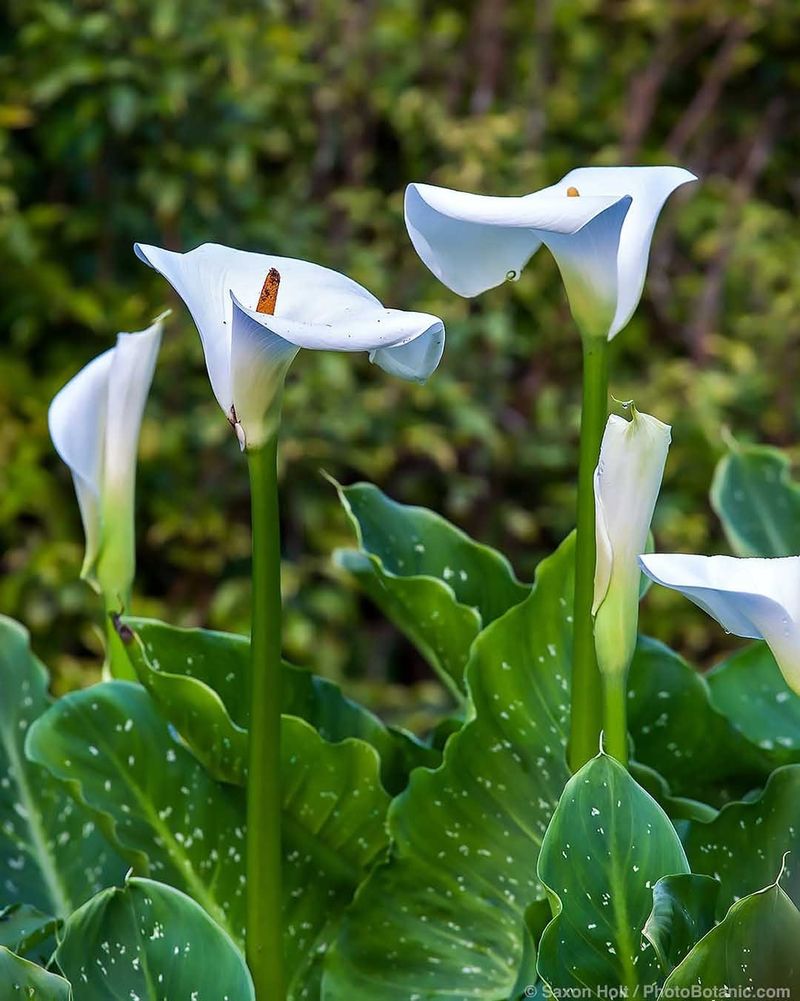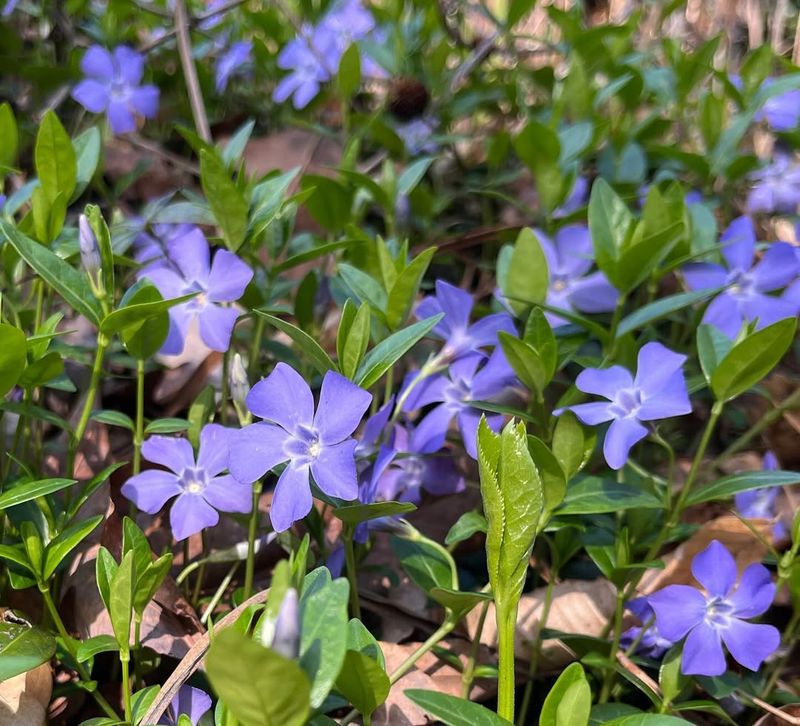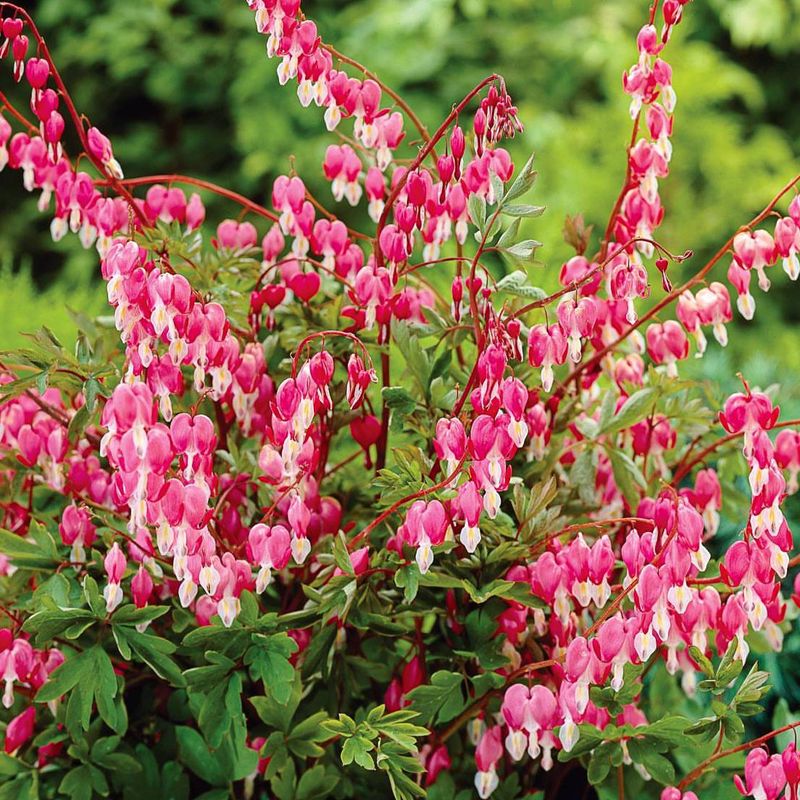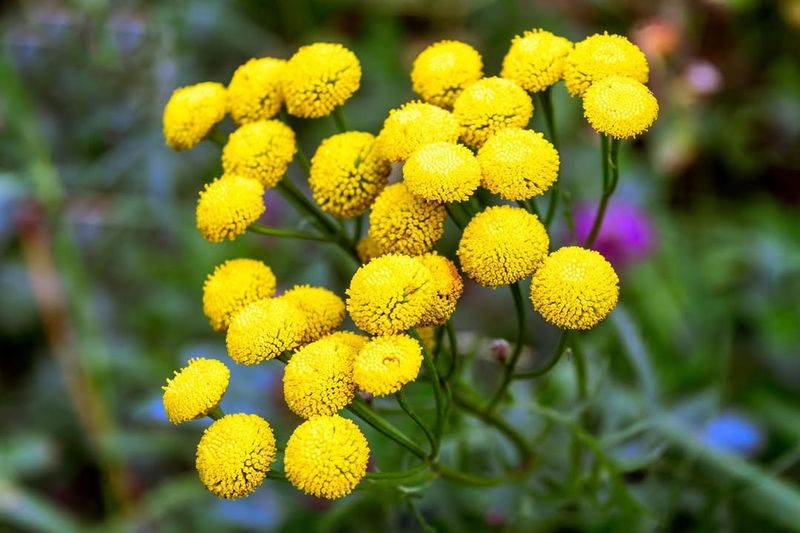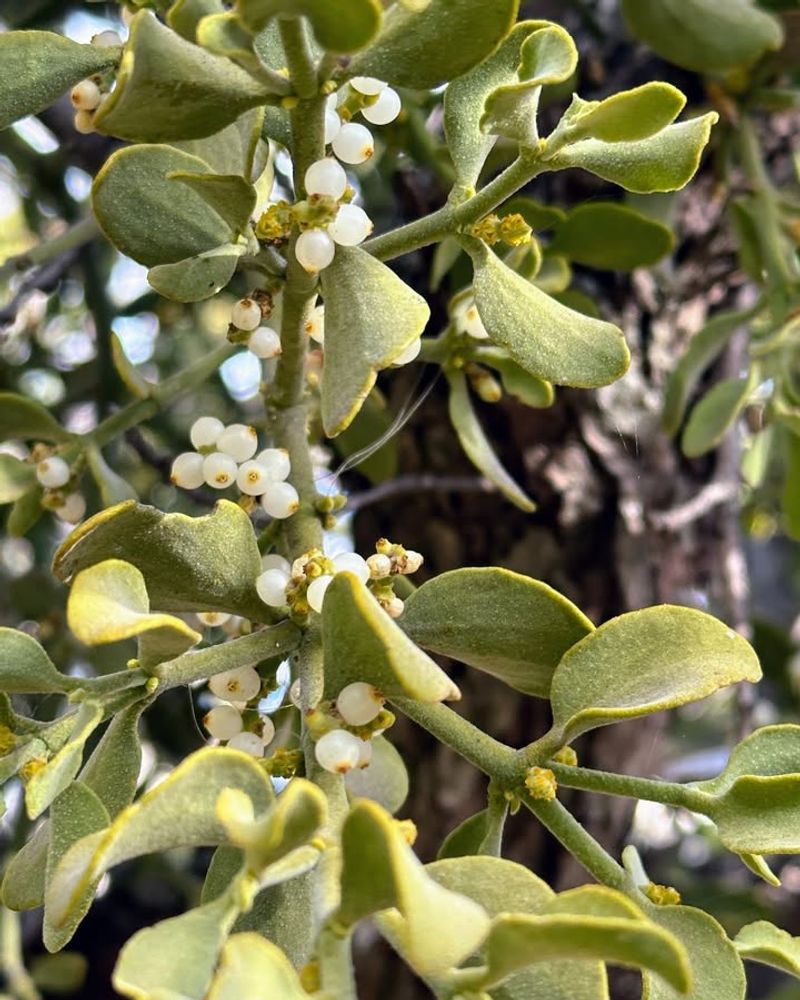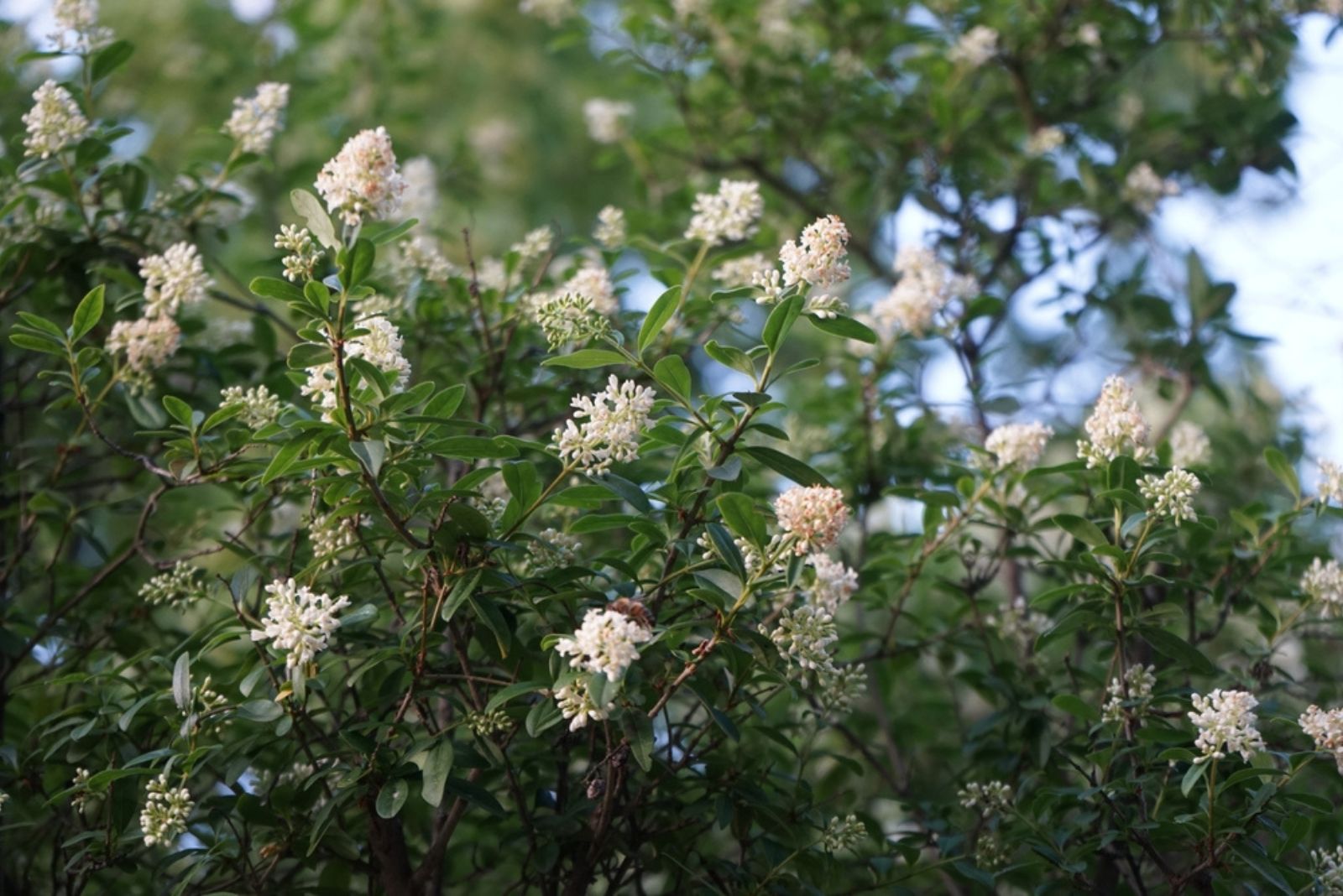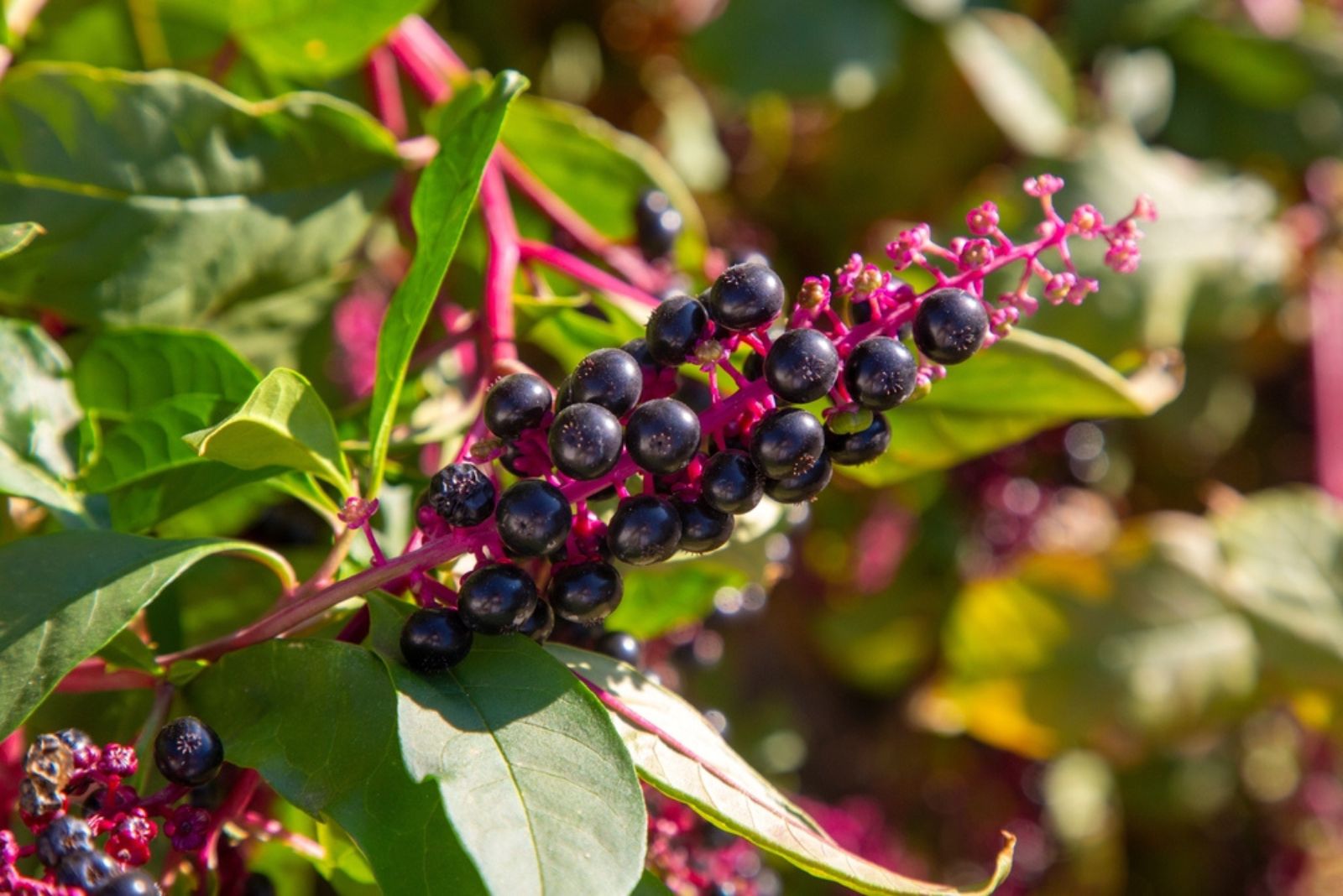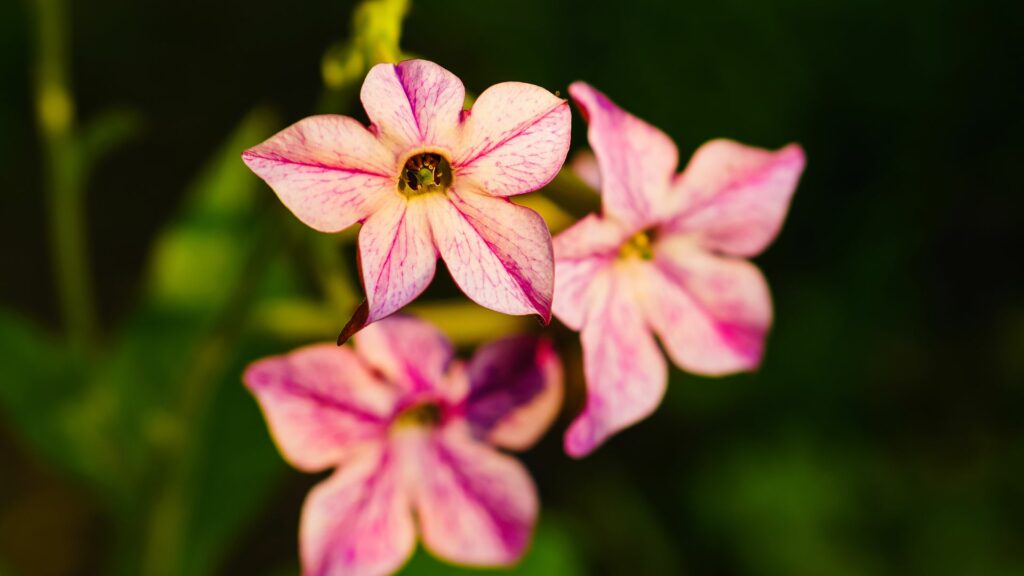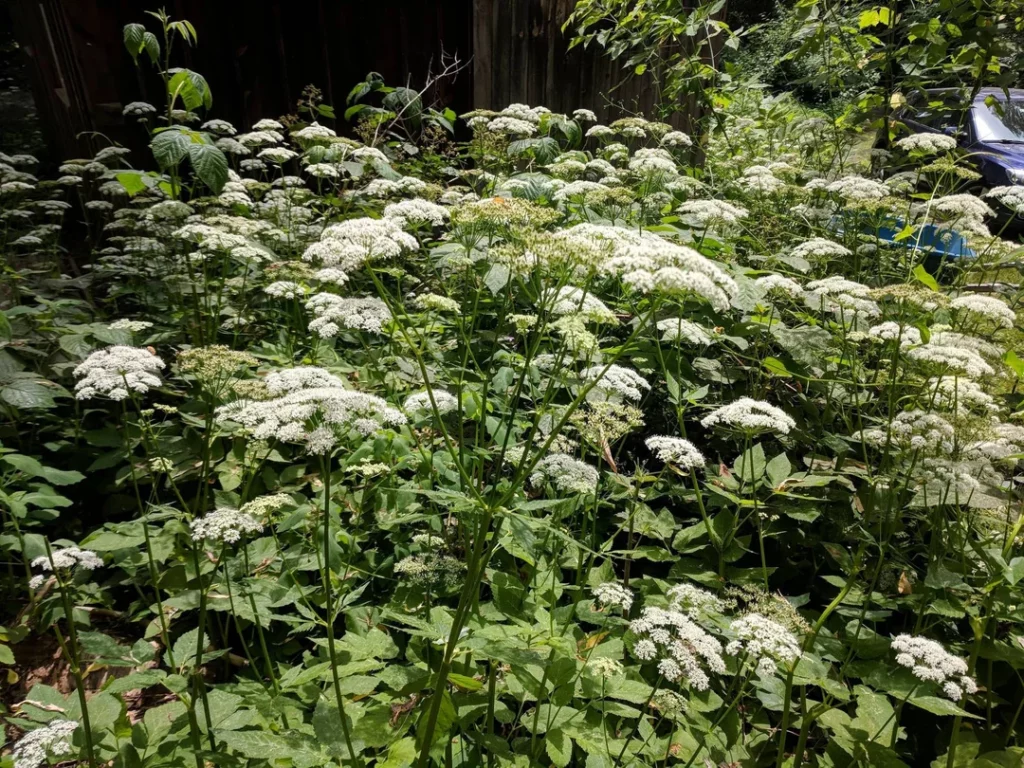Some plants might seem like a perfect addition to your garden, but a few can cause more harm than they’re worth. Daffodils, for example, are deceptively toxic, and they’re just one of 35 harmful plants you should avoid.
These beauties can pose risks to your pets, children, and sometimes even to the overall health of your garden. It’s easy to be tempted by their charm, but a little caution goes a long way.
Let’s explore which plants should stay off your gardening list to keep everything safe and thriving!
1. Daffodils
These cheerful yellow flowers might seem harmless. However, daffodils contain lycorine, an alkaloid that can cause nausea and vomiting if ingested.
Pets, particularly dogs and cats, are at risk if they dig up bulbs and chew on them. Gardeners handling daffodils should also be cautious, as direct contact can lead to “daffodil itch,” a form of dermatitis.
Ensure these flowers are planted away from areas where children and pets play. Consider wearing gloves when handling them to avoid skin irritation.
2. Oleander
Known for its striking appearance, this evergreen shrub is highly toxic. Oleander contains compounds that can cause severe heart issues if ingested.
Even the smoke from burning oleander can be dangerous. It’s crucial to keep this plant out of reach from children and pets. Gardeners should exercise caution, wearing gloves and long sleeves when pruning.
While it provides beautiful blooms, the risks often outweigh the benefits of having oleander in your garden.
3. Foxglove
Admired for their bell-like flowers, foxgloves can be deadly. They contain digitalis, a compound that affects heart function.
Even small amounts ingested by humans or animals can be fatal. When handling foxgloves, wear protective gear to prevent skin contact.
Their towering presence in the garden is striking but consider their placement carefully. Ensure they’re located away from common play areas.
4. Lily of the Valley
These plants are enchanting with their fragrant blooms. Their beauty, however, hides a toxic nature.
Lily of the Valley contains cardiac glycosides, leading to symptoms like dizziness and upset stomach. Pets and children are particularly vulnerable.
Plant these away from high-traffic areas and consider using barriers to deter accidental ingestion. Handle with care to prevent skin irritation.
5. Rhubarb Leaves
While the stalks are edible and often used in pies, rhubarb leaves are toxic. They contain oxalic acid, which can cause breathing difficulties and kidney stones.
It’s important to educate children on which parts of the plant are safe. If you grow rhubarb, ensure leaves are discarded safely.
Regularly check for any fallen leaves that might attract curious pets.
6. Castor Bean
This plant is visually striking, yet extremely dangerous. Castor beans contain ricin, a potent toxin.
Just a few seeds can be fatal to both humans and animals. If you choose to plant castor bean, consider strict controls and signage to warn of its dangers.
Protective gardening gear is recommended when handling or pruning.
7. Aconitum (Monkshood)
This plant is known for its deep blue flowers. All parts of aconitum are toxic, especially the roots.
Contact with the skin can result in tingling or numbness. Ingestion can lead to nausea or more severe symptoms.
Wearing gloves and long sleeves is crucial when working with monkshood. Educate others about its hazards if it’s in your garden.
8. Wisteria
Wisteria is admired for its elegant, cascading blooms. However, it contains lectins and glycosides, which can cause stomach upset.
Careful placement away from children’s play areas is advised. While beautiful, it’s best to enjoy these blooms from a distance.
Ensure that any pods or seeds are promptly removed to reduce risk of ingestion.
9. Hydrangea
These popular garden shrubs are loved for their voluminous blooms. However, hydrangeas contain cyanogenic glycosides.
If ingested, they can produce cyanide, leading to symptoms like dizziness and rapid heart rate. Proper positioning in the garden is essential to avoid accidental consumption.
Regular pruning and removal of fallen leaves help limit risk.
10. English Yew
The English yew is a historic tree, revered for its longevity. Its leaves and seeds are highly toxic, containing taxine alkaloids.
Ingesting any part of the yew can result in severe poisoning symptoms. Plant these away from high-traffic areas and ensure berries are not accessible to children or pets.
Consider using fencing to restrict access.
11. Daphne
Daphne shrubs are fragrant and alluring. Unfortunately, the berries and leaves are toxic, causing nausea and abdominal pain.
Pets are particularly at risk if they consume fallen berries. It’s advisable to plant daphne in less accessible areas of the garden.
Regular cleaning of fallen debris can help mitigate risks.
12. Angel’s Trumpet
Known for their striking trumpet-shaped flowers, Angel’s Trumpet is not as heavenly as it sounds. All parts are toxic, especially the seeds and leaves.
Symptoms of ingestion include hallucinations and confusion. Gardeners should use caution and wear protective clothing when handling.
Consider educating neighbors or visitors about its dangers if it’s in a visible spot.
13. Azalea
Azaleas are a staple in many gardens, prized for their colorful blooms. However, they contain grayanotoxins, which can cause nausea and difficulty breathing if ingested.
Keeping them out of reach from children and pets is crucial. Well-placed signage or garden borders may prevent accidental contact.
Regular maintenance and cleanup of fallen flowers can reduce risks.
14. Poison Ivy
This notorious plant is known for causing severe skin irritation. The oil, urushiol, can result in painful rashes upon contact.
Wearing long sleeves and gloves can prevent exposure during garden work. Misdirected removal attempts can aerosolize the oil, worsening exposure.
It’s best to identify and leave poison ivy undisturbed or have professionals handle removal.
15. Belladonna (Deadly Nightshade)
Belladonna is infamous for its toxic berries. Ingesting even a small amount can lead to serious symptoms.
The plant contains tropane alkaloids, affecting the nervous system. Keep belladonna out of all garden areas accessible to children and pets.
Educate family members and visitors about its dangers if it grows nearby.
16. Hemlock
Hemlock is renowned for its toxic properties, historically used as a poison. All parts of the plant are hazardous.
Consumption can lead to respiratory failure. It’s vital to recognize and remove hemlock from any garden setting.
Protective gear is advisable for those handling this dangerous plant.
17. Lantana
Lantana attracts butterflies but poses a threat to other creatures. Its berries are toxic, especially to children and pets.
Symptoms from ingestion include vomiting and muscle weakness. Strategically place lantana in areas less prone to contact.
Routine monitoring and removal of ripe berries can help manage risks.
18. Jimson Weed (Datura)
Datura, or Jimson weed, is notorious for its hallucinogenic properties. All parts are toxic if consumed.
Gardeners should be aware of its invasive nature and remove it promptly. Accidental ingestion, especially by children, can lead to severe health issues.
Wear gloves when handling and dispose of plants responsibly.
19. Autumn Crocus
The autumn crocus is beautiful but contains colchicine, a toxic alkaloid. Even small doses can be fatal to humans and animals.
Its similarity in appearance to edible crocus varieties can lead to dangerous mix-ups. Keep these plants far from edible gardens.
Protective gear is recommended when handling or planting.
20. Cyclamen
Cyclamen are popular for indoor and outdoor cultivation. However, they contain saponins, causing skin irritation and stomach upset.
Placing them out of reach of curious pets and children is wise. Cyclamen’s tubers are particularly toxic if ingested.
Regularly inspect plants and remove any fallen leaves or flowers promptly.
21. English Ivy
English ivy is admired for its versatility in landscaping. Its leaves and berries, however, are harmful if ingested.
Prolonged skin contact with the plant can cause dermatitis. Ensure ivy is kept in areas where it can’t overgrow into walkways or play zones.
Regular pruning and maintenance are essential to prevent unwanted spread.
22. Morning Glory
The vibrant flowers of morning glory are a sight to behold. However, they contain lysergic acid, which can cause hallucinations and digestive upset.
Seeds are particularly concerning, often ingested accidentally by pets or children. Plant morning glory away from high-contact areas.
Regularly check for and dispose of any dropped seeds.
23. Poinsettia
Poinsettias are a favorite holiday decoration. While not deadly, their sap can cause irritation.
Contact with skin may lead to mild rashes, and ingestion can cause stomach upset. Keep poinsettias out of reach of pets, who may be tempted to chew on leaves.
Proper placement and care can minimize any potential risks.
24. Buttercup
Buttercups are charming with their bright yellow flowers. Yet, they contain ranunculin, which can cause blistering in the mouth if eaten.
Pets grazing in fields with buttercups may be at risk. Despite their appeal, it’s important to manage their growth in garden areas.
Educate family members about their potential risks if found nearby.
25. Elderberry
Elderberries are often used in jams and wines, but raw berries and other parts are toxic.
They contain cyanogenic glycosides, which can cause nausea and vomiting if consumed raw. Cooking neutralizes the toxin, making proper preparation vital.
Educate children on safe berry picking and ensure only ripe, cooked elderberries are used.
26. Calla Lily
Calla lilies are elegant additions to any garden. However, they contain calcium oxalate crystals, causing irritation.
Ingestion can lead to swelling and discomfort in the mouth. Keep these lilies away from pets that might chew on them.
When handling or trimming, wear gloves to prevent skin irritation.
27. Vinca (Periwinkle)
Vinca is often used as an ornamental ground cover. It contains alkaloids that can cause digestive upset if ingested.
Pets and small children should be kept away from areas where vinca is prevalent. Routine monitoring and educating children about not picking flowers can help avoid mishaps.
Regular pruning can maintain growth and minimize risks.
28. Bleeding Heart
Bleeding hearts are known for their unique flower shape. However, they contain isoquinoline alkaloids, which can be toxic if ingested.
Symptoms might include tremors or difficulty breathing. Placement away from play areas is recommended.
Gloves are advisable when handling these plants to avoid skin irritation.
29. Tansy
Tansy is recognized for its fern-like leaves and yellow flowers. It contains thujone, which can cause liver damage if ingested in large quantities.
While sometimes used in herbal remedies, it’s crucial to manage its growth. Ensure it’s not accessible to children or pets.
Regular pruning and monitoring can prevent unwanted spread in gardens.
30. Mistletoe
Popular in holiday traditions, mistletoe is toxic if ingested. The berries are particularly dangerous, causing cardiovascular issues.
Use caution when displaying mistletoe indoors, keeping it out of reach from children and pets. Consider artificial alternatives for decoration.
Educate family about the dangers of mistletoe should they encounter it outdoors.
31. Privet
Commonly used as a hedge or privacy screen, privet might seem like a low-maintenance option—but it comes with serious red flags.
All parts of the plant are toxic, especially the berries, which can cause stomach pain, vomiting, and diarrhea if ingested by children or pets.
Beyond its toxicity, privet is also a highly invasive species in many regions. It spreads aggressively, outcompetes native plants, and can be extremely difficult to remove once established.
32. Pokeweed
Pokeweed is one of those plants that might look harmless when it’s young—but don’t be fooled. It grows rapidly, with reddish-purple stems, white flowers, and dark purple berries that birds love.
The problem? Every part of this plant is toxic to humans and pets. The berries are especially dangerous to children, and even the roots can be fatal if consumed.
It also reseeds like crazy, making it hard to control once it pops up. Unless you’re ready for a battle—and a risk—it’s best to keep pokeweed far from your garden.
33. Snow-On-The-Mountain
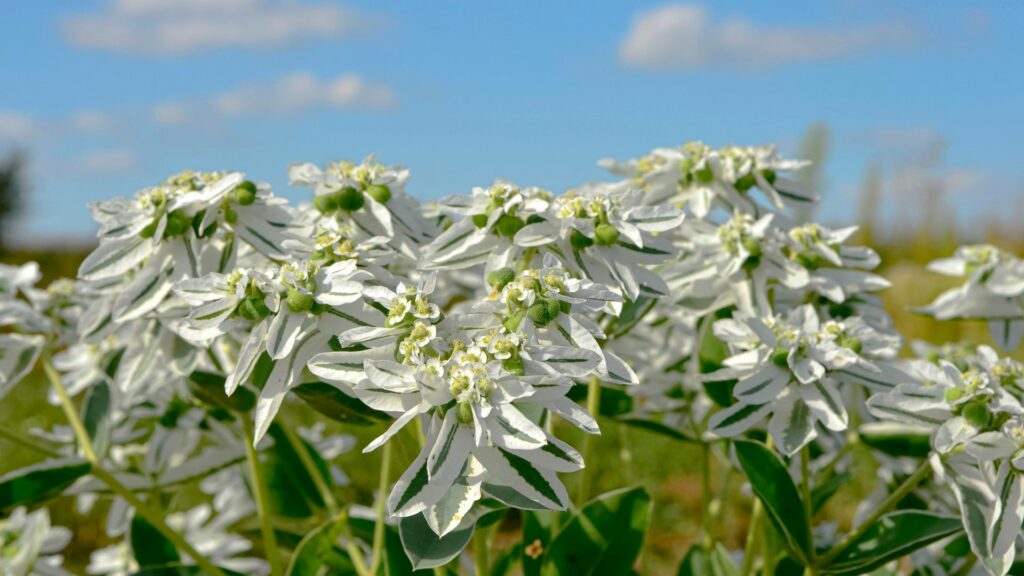
With its striking white-edged leaves, Snow-on-the-Mountain (Euphorbia marginata) is often chosen for decorative beds—but it comes with a warning. The milky sap is highly irritating to the skin and eyes, and ingestion can cause vomiting and diarrhea.
Handling the plant without gloves can lead to painful rashes, especially in sunny weather where reactions may intensify. Even brushing against it can cause problems for people with sensitive skin.
If you’re set on growing it, wear protective clothing and make sure it’s placed far from pathways, children’s play areas, and curious pets.
34. Nicotiana (Flowering Tobacco)
Though its sweet scent and night-blooming flowers make Nicotiana a favorite in ornamental beds, few realize that all parts of the plant are poisonous. It contains nicotine and other alkaloids that can cause severe digestive and nervous system symptoms when ingested.
Even handling the plant without gloves can result in skin irritation or nicotine-like symptoms if sap is absorbed. Pets that chew on the leaves are especially vulnerable.
If included in your garden, treat Nicotiana with care and ensure it’s out of reach from animals and small children.
35. Water Hemlock
Water hemlock is one of the most toxic plants in North America and is considered a deadly threat in any garden. It thrives in wetland areas and can be found in marshes, along riverbanks, or in other damp locations.
The symptoms of poisoning from water hemlock include nausea, vomiting, abdominal pain, seizures, and respiratory failure, often leading to death if not treated immediately.
If you happen to live near a wetland or river, avoid planting water hemlock altogether. If you have it on your property, be sure to remove it carefully—wear gloves and protective gear to avoid skin contact, and keep a safe distance from any areas where it grows.

